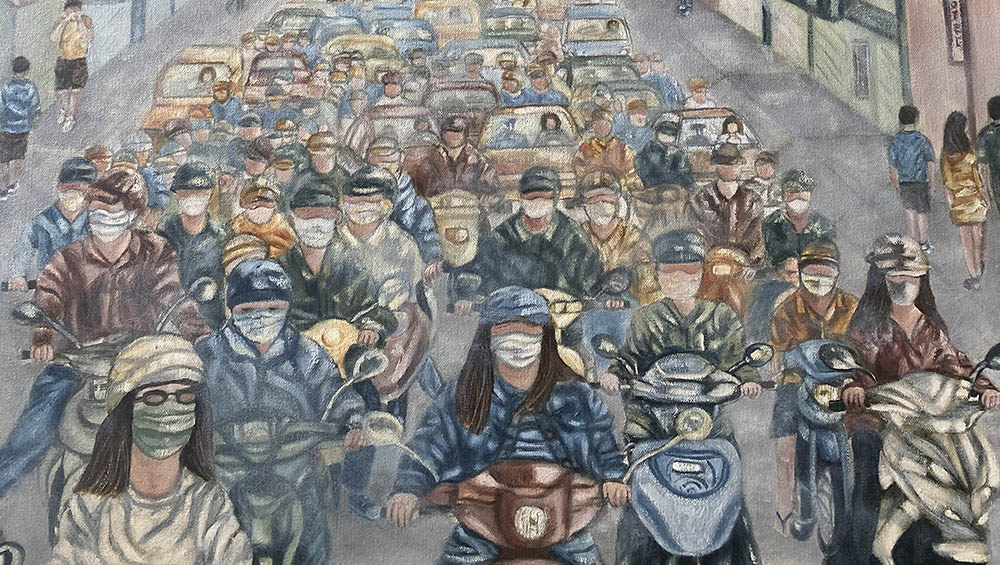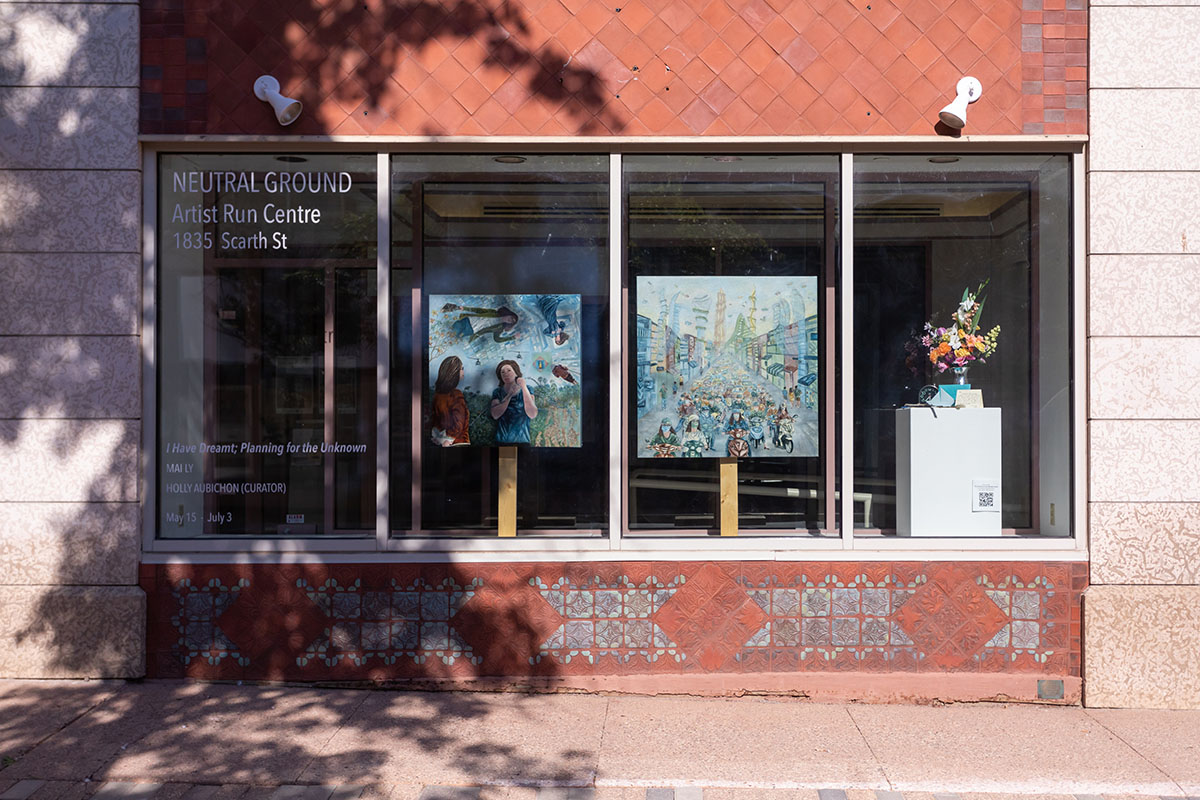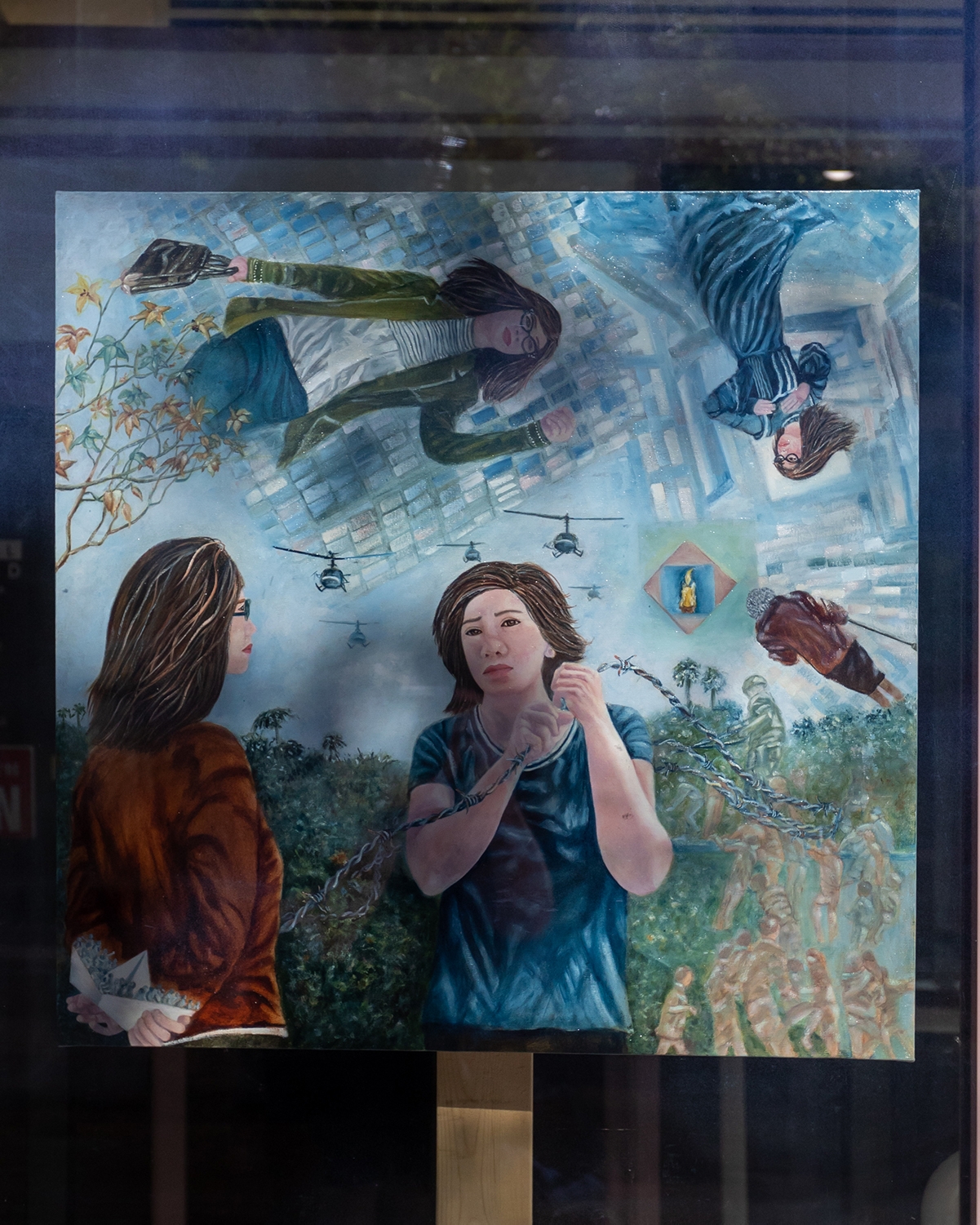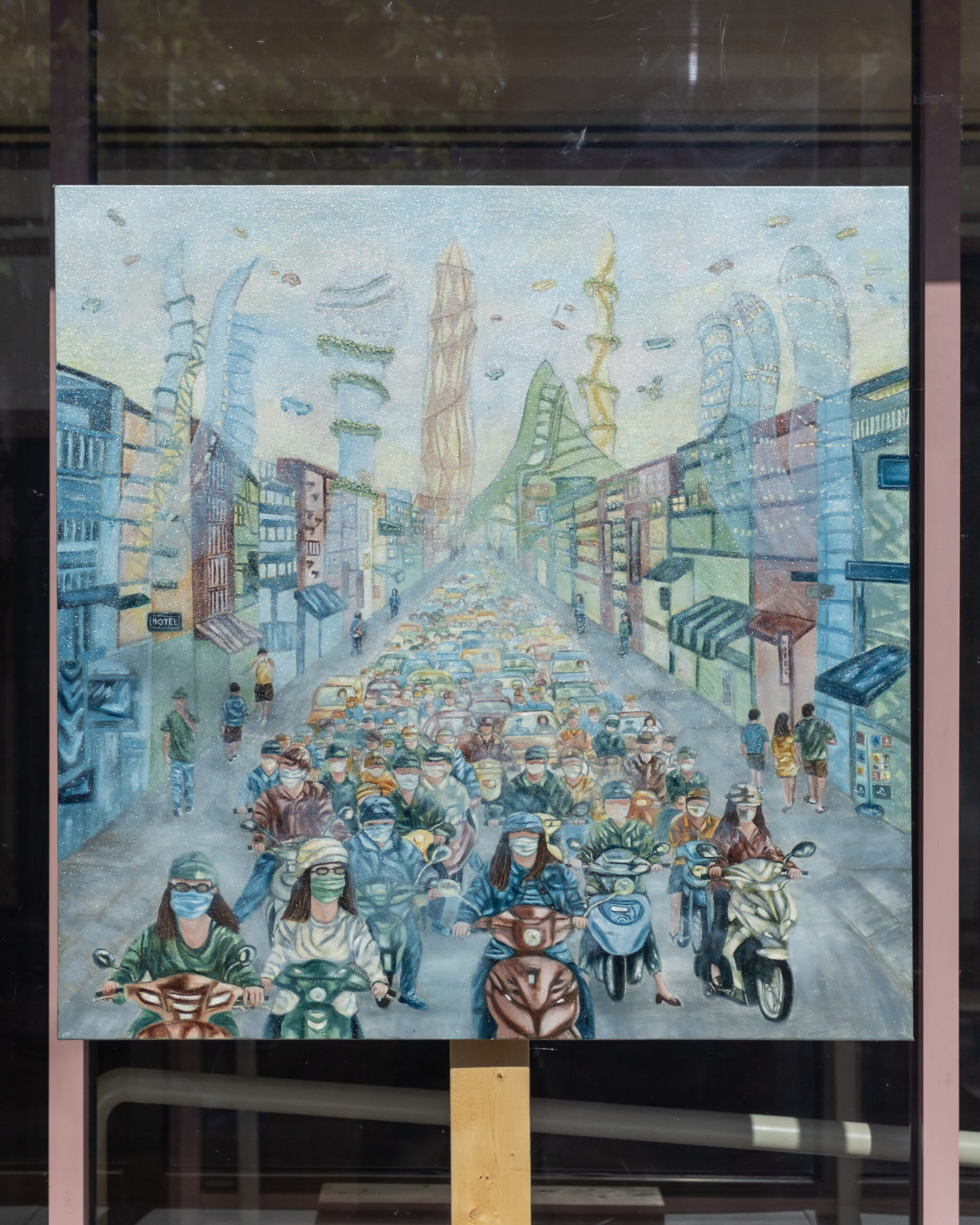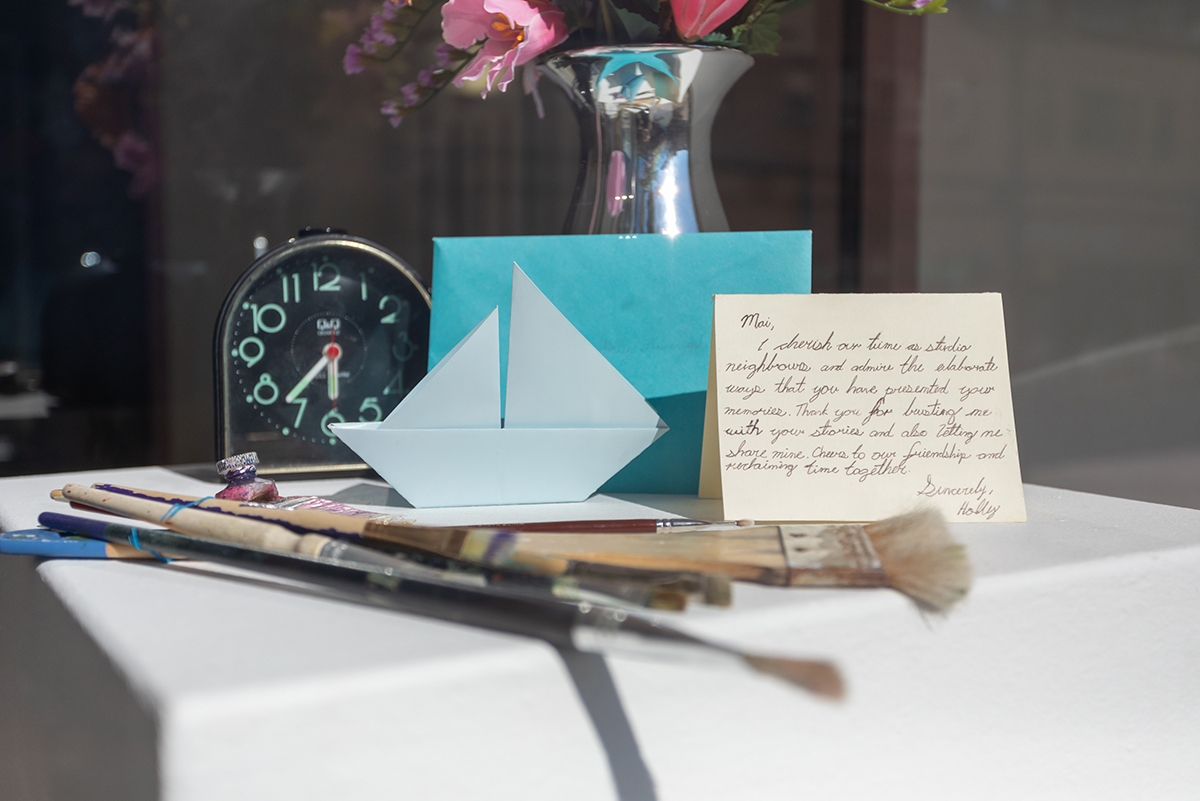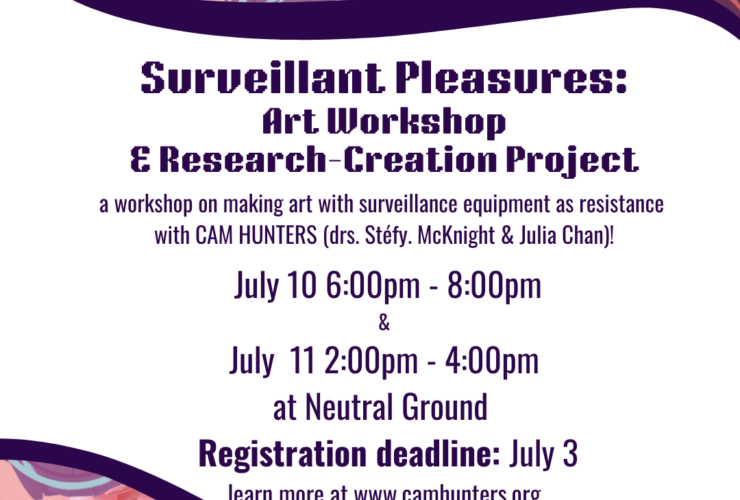Mai Ly
Holly Aubichon (Curator)
May 15 – July 3, 2021
I Have Dreamt; Planning for the Unknown, explores the pivotal decision Mai Ly made, to escape from Saigon, Vietnam in 1989 and how it has influenced their life and art practice. Now, 31 years later, Ly’s paintings reflect, document and visually address the passage of time. “I went through multiple hardships, even risking my life, before being able to settle down and pursue my dreams again. Yes, it has been my life, but it does feel that I was robbed of many years that I would have used differently – like becoming an established artist. I have lost a lot of time, and thus I cherish my time so much now.” The intent of this exhibition is to offer a space for the artist to reclaim a portion of their ‘lost time’ and to dream for the unknown.
Link to The Emotions We Carry Forward, a reflective conversation between the artist Mai Ly, and Holly Aubichon, as they talk and reflect as friends.
MAI LY was born and raised in Vietnam. She immigrated to Canada in 1991 and currently resides in Regina. Ly graduated from the University of Regina in 2021 with a Certificate in Advanced Studio Techniques. Her current work is a series of oil paintings, focusing on themes of time and life. Ly explores the concept of time, not only in the present but also where time and life coexist in parallel universes. Ly is an active member of the MacKenzie Art Gallery, the Art Gallery of Regina, the Regina Federations of Artists, and the HeARTland Artists’ Guild.
HOLLY AUBICHON is an emerging Indigenous artist and curator. She recently received her BFA from the University of Regina, minoring in Indigenous Art History. Passionate about art in Saskatchewan, Aubichon has worked and been involved with galleries in Regina including the MacKenzie Art Gallery as a Gallery Facilitator, and previously Neutral Grounds board’s secretary. Additionally, she has worked as the Conservation/Collections Care Assistant at the Royal Saskatchewan Museum. Aubichon is passionate about making space for BIPOC artists in Saskatchewan, interested in prairie collaborations and is connected to a small BIPOC community in Alberta.
The exhibition I have Dreamt, Planning for the Unknown was guided by the friendship and conversations with Mai Ly. Through Mai’s paintings, she honours her past while releasing the hold that the past can have in order to move ahead with future aspirations. Like Mai, I often find myself trying to revisit my past, at times lingering longer than needed. Mai reminds me to take care of myself. She tells me that time doesn’t stop for anyone, so you must take control of where you put your energy. The hardships of this past year have shed light on our shared inability to control time and forced us all to question our own autonomy. It feels fitting to offer this exhibition as an invitation to witness a reclamation of lost time.
Spiral forms have been used throughout history as a method of documenting the passage of time. In the painting Introspection, Mai consciously avoids traditional western methodologies that favour linear time and instead documents her time with a spiral form. She interacts with the details of her life by creating past and future selves as part of the spiral, including her current self separate from the flow of the spiral, and she is seen reflecting on her timeline. Mai chose to start her story in 1989, as a young adult fleeing Communist Vietnam. Mai, young and driven to find success in their workplace is seen surrounded by towering glass buildings blended into the sky. As loud, lingering helicopters emerge from the background and fly into the foreground, the artist hints at her memories of fleeing her homeland and how it returns to the forefront of her mind. I can hear the rushing sound of helicopters. The static and contemplative figure of Mai is holding a paper origami boat, cramped with departing Vietnamese people; sharing her lived experience, she uses the figure as a way to expand on her memories and how past and present feelings ebb and flow. The complexities in her composition offer the viewer to consider the many ways we navigate memories and lived experiences.
I’m reminded of a drawing exercise I did during my undergrad, inspired by the illustrated historical accounts done by the Lakota and Great Plains Nations. These recordings, called Winter Counts, often moved in the form of a spiral with the purpose of sharing knowledge with future generations. Pictographs were used to communicate, document and pass along history, an alternative to the western writing structures which privilege formal beginnings and ends. Similarly, Mai employs the spiral as a way of reactivating embodied knowledge that exists outside of colonial influence.
In the painting, Que Sera, a revelation of futuristic yet familiar open prairie skies merges behind crowded city aesthetics. Ghostly towering buildings and flying cars play on the artist’s predictions of future living. It feels as if the hardships of her past have made her aware of how quickly things can change. I think about our time spent in the studio together, I can still hear her, almost motherly, singing the Doris Day song, “what will be, will be” as she gently waves her paintbrush in the air. The melodic title provides Mai’s perspective that has been developed over time and her experience in both Eastern and Western landscapes. The paint application implies a forecast, both an influence of weather and as a forecast of the future. Such as the element of fog in the environment, likely air pollution from the crowded one-way street, or of foggy memory. The traffic moves towards the viewer, Mai faces the future, deeply and honestly reflects on time and hereafter. The message I have found for myself in these paintings is that there are many uncontrollable experiences handed to us, and we must learn how to lead in the ways that best serve ourselves and as an extension of self, our community.
Frequently, I ruminate on the way in which experiences and memories remarkably influence people’s ways of living. I’m receptive to the ephemeral and moldable quality of memory; as memories continue to generate and evolve, a number of memories can be replaced. Through conversations with other artists who I feel an affinity towards, it’s apparent that the common approach of unpacking memory confronts the process of realization. Artists end up opening themselves up to an ever-surprising rush of emotions, staring and physically editing the complex details of their recollection in order to decipher what actually happened. When I see an artist creating work about a lived experience, I see them honouring the decisions and sacrifices made in their life by devoting time to reliving that memory. It is the deeply personal interpretation of an experience that influences the ways we conduct ourselves in the present day.
Lastly, The Emotions We Carry Moving Forward and associated audio is intended to take up space in a way our bodies and memories cannot. The collaborative still-life memorializes the time that Mai and I spent together prior to graduating from the University of Regina in 2021. The recorded conversation accessed through the QR code is associated with the still-life and elaborates on ways we have understood our time, with an emphasis on sharing, reflecting and catching up with one another. Collectively, the artworks exhibited offer a space for closure and observation which allows us to move forward, increasingly inching away from the colonial pressures. I found encouragement through an artist talk earlier this year by Nasrin Hamada, where they emphasized the importance of putting care for the artist at the center of writing, as a love letter. This method has inspired Mai and myself to resist the colonial pressures that have been placed on us, and instead support our wants for freedom in our creative practices.
-Holly Aubichon, 2021
